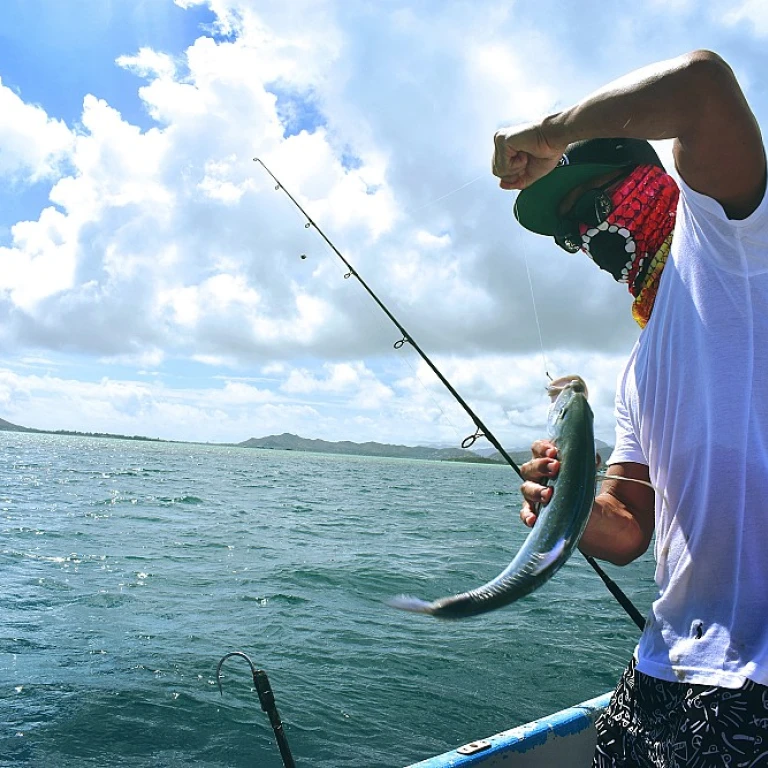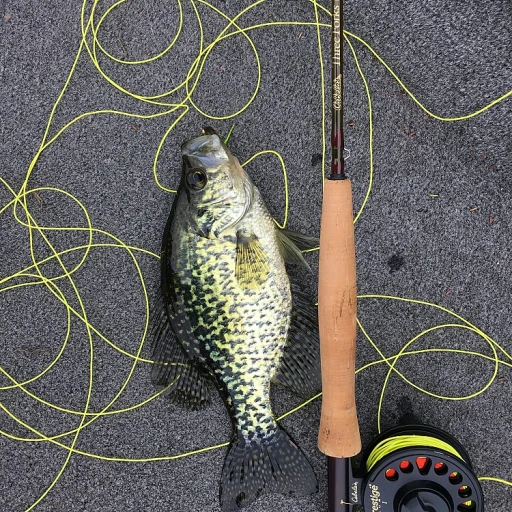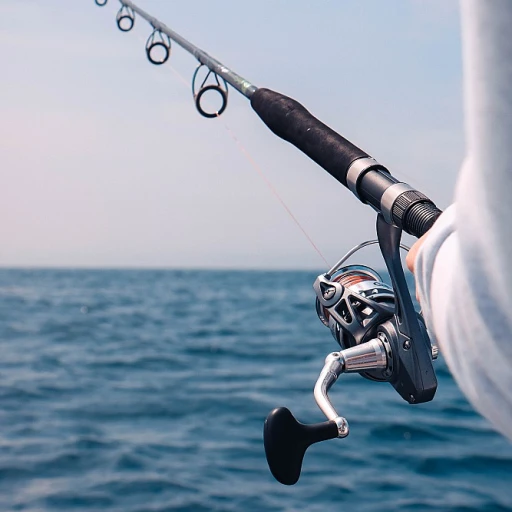
Understanding the different types of tuna fish
Exploring the different species of tuna
From the bustling Pacific Ocean to the calm waters of the Mediterranean, the tuna family, scientifically known as thunnus, presents an intriguing variety of fish. Several species within this family, such as bluefin, yellowfin, and albacore, have earned a well-deserved place in the hearts of anglers and seafood lovers. Understanding what sets each type apart can be both fascinating and beneficial for anyone interested in tuna.
Bluefin tuna is widely regarded as the most prized of all, with its flavorful, marbled flesh making it a sushi favorite in high-end Tokyo restaurants. Interestingly, bluefin is divided into three distinct species: the Atlantic bluefin, Pacific bluefin, and Southern bluefin tuna. The Atlantic bluefin tuna, for instance, can weigh up to a staggering 1,500 pounds, making it one of the most formidable catches in the fishing world.
Yellowfin tuna, or thunnus albacares, is another popular species. Known for its speed and endurance, this fish is a favorite among sport fishermen. Yellowfin, often referred to as ahi in Hawaii, often mingles in tropical and subtropical waters across the globe. Its firm, pinkish flesh is perfect for grilling and searing.
On the other hand, albacore tuna, often called the 'white meat' of the ocean, is highly valued for its mild flavor and is commonly found in canned tuna. Found mainly in the Pacific and Atlantic Oceans, this species is recognized for its long pectoral fins and silvery sides. Albacore's lean meat makes it a staple in many dishes.
Moving on to skipjack tuna, the most commonly caught species, it's the backbone of the canned tuna industry. Skipjack, making up about 60% of the world's commercial tuna catch, is abundant in warm waters. Known for its darker meat compared to albacore, skipjack tuna is often found in light tuna cans.
Lastly, the bigeye tuna, with its preference for deeper, cooler waters, stands out. Its flesh ranges from pink to deep red, suitable for sashimi and steaks. Bigeye is notably found in the Indian and Pacific Oceans and is a crucial part of many Pacific fisheries commissions' conservation efforts.
To understand more about endangered fish species and how to aid in their preservation, explore our guide on how anglers can help.
Bluefin tuna: the prized catch
Bluefin tuna: the prized catch
Bluefin tuna, also known as thunnus thynnus, is arguably the most coveted type of tuna in the fishing industry. Found primarily in the temperate and colder waters of the Atlantic Ocean and Mediterranean Sea, the bluefin can reach colossal sizes, with some specimens weighing over 1,500 pounds (>680 kg). It's this sheer size and the excellent quality of its meat that have made bluefin the premier choice for sushi and sashimi.
Bluefin tuna is often divided into three main subspecies:
- Northern bluefin tuna: Predominantly found in the Atlantic and adjacent seas.
- Pacific bluefin tuna: Mostly present in the Western and Central Pacific regions.
- Southern bluefin tuna: Found between the Indian and Atlantic Oceans.
According to the FAO, bluefin tuna stocks have faced severe overfishing. For instance, the Atlantic bluefin tuna population experienced a staggering decline of over 80% in the last 40 years. This alarming drop has put the species on the IUCN Red List of Threatened Species, pushing organizations such as the ICCAT (International Commission for the Conservation of Atlantic Tunas) to implement stricter quotas.
Prominent marine biologist Dr. Barbara Block has dedicated years to studying bluefin tuna behavior. She once said, "Bluefin tuna are the Porsche of the ocean – fast, powerful, and invaluable." Her research revealed that bluefin tuna are highly migratory, traveling thousands of miles across the Atlantic and Pacific Oceans in their lifetime.
Despite the established quotas, illegal, unreported, and unregulated (IUU) fishing remains a hurdle. The high market demand, especially in places like Japan where a single bluefin tuna can fetch hundreds of thousands of dollars at auctions, makes enforcement challenging.
Case in point, the Tsukiji fish market in Tokyo once sold a 612-pound bluefin tuna for an astronomical $3.1 million. Such high stakes often lead to controversies surrounding fishing practices and conservation efforts.
For more detailed information on reproduction processes of fish, including bluefin tuna, check out this article on how do fish have sex.
Yellowfin tuna: a favorite among anglers
Why yellowfin tuna makes anglers' hearts race
Yellowfin tuna, scientifically known as Thunnus albacares, is adored for many reasons. This magnificent fish, easily recognized by its bright yellow dorsal and anal fins, often referred to as “Ahi” especially in Hawaii, is a favorite among sport fishermen for both the challenge it offers and the its rewarding catch.Where you can find them
Yellowfin tuna inhabit tropical and subtropical oceans around the globe. They are commonly found in the Pacific and Indian Oceans, thriving in areas where the water temperature suits their needs. Known for their migratory nature, they often travel in schools and can be spotted in regions like the central and western Pacific fisheries.Fishing for yellowfin
Fishing for yellowfin tuna is no small feat. These fish can swim at speeds up to 50 miles per hour, making them a thrilling yet challenging catch. Anglers often rely on trolling techniques, using artificial lures to mimic the fast movements of the fish’s natural prey. The Inter-American Tropical Tuna Commission (IATTC) and the Western and Central Pacific Fisheries Commission (WCPFC) are pivotal in regulating fishing practices to ensure that the yellowfin populations aren't overfished and remain sustainable.Size and records
Yellowfin tuna can grow quite large, with the average catch weighing between 20 to 200 pounds. However, there have been recorded instances of yellowfin exceeding 400 pounds. The International Game Fish Association (IGFA) keeps a record of such remarkable catches, celebrating the allure and challenge that yellowfin present to anglers.Nutritional punch
Yellowfin tuna isn't just a thrill for anglers; it's a nutritional powerhouse too. Rich in proteins, vitamins, and omega-3 fatty acids, it's a favorite for health-conscious consumers. The fish’s firm, red meat makes it ideal for various culinary uses, from sushi to grilling. Regularly consuming yellowfin can bolster heart health, reduce inflammation, and provide essential nutrients crucial for bodily functions. For more insights on how yellowfin and other tuna species contribute to health and diets, check our detailed exploration on the benefits of eating tuna.Conservation efforts
Conservation is crucial for yellowfin tuna due to their popularity among fishermen and consumers. Organizations like the Inter American Tropical Tuna Commission work tirelessly to manage and protect tuna populations, establishing measures such as setting catch limits, monitoring population levels, and promoting sustainable fishing practices to ensure these vibrant species don't face depletion.Albacore tuna: the 'white meat' of the ocean
The unique appeal of albacore tuna
Albacore tuna, often referred to as the 'white meat' of the ocean, holds a special place in the hearts of seafood lovers and anglers alike. Known scientifically as Thunnus alalunga, this tuna species is distinguished by its long pectoral fins and lighter, more delicate flesh compared to its cousins.Appearance and habitat
Albacore can be found in both the Pacific and Atlantic Oceans. They are highly migratory and can sometimes be challenging to locate, often leading anglers on a thrilling chase across open waters. Typically found in the temperate and tropical regions, these fish are known to dive deep, making them a sought-after catch for sportfishing.Albacore in the fishing industry
With around 70% of the albacore tuna catch coming from the Pacific Ocean, these fish are a vital part of both commercial and recreational fisheries. According to the Western Central Pacific Fisheries Commission (WCPFC), the albacore stocks are monitored to ensure sustainable fishing practices. The U.S. and other countries around the Pacific Rim play essential roles in these conservation efforts.Albacore's culinary profile
Unlike other tuna species, albacore's flesh is pale pink to white and has a milder flavor, earning it the nickname "chicken of the sea." This makes it particularly popular in canned tuna products. Albacore's lower mercury levels compared to larger tunas like bluefin also make it a preferred choice for those mindful of their seafood consumption. According to the Monterey Bay Aquarium's Seafood Watch, choosing albacore from U.S. or Canadian Pacific troll or pole-and-line fisheries is a sustainable choice.Nutritional benefits
Rich in omega-3 fatty acids, protein, and essential vitamins, albacore tuna is not just tasty but also highly nutritious. A 3.5-ounce serving of albacore provides approximately 20 grams of protein and only 100 calories, making it an excellent source of lean protein. It's also packed with heart-healthy fats, promoting cardiovascular health.Protecting albacore populations
Maintaining healthy albacore tuna populations involves careful management. Organizations like the Inter-American Tropical Tuna Commission (IATTC) and the International Union for Conservation of Nature (IUCN) work tirelessly to ensure that stocks are protected and fishing methods are sustainable. The IUCN currently lists certain regional albacore populations as near threatened, underscoring the need for continued vigilance and conservation efforts.The allure of albacore tuna goes beyond the catch. From its delicate, white meat to its nutritional value, albacore remains a treasured species in the fishing community, embodying the perfect blend of sport and sustainability. So, next time you're enjoying your canned tuna salad, remember the journey of the albacore and the efforts made to ensure it continues to thrive in our oceans.
Skipjack tuna: the most commonly caught species
Skipjack tuna: the most commonly caught species
Skipjack tuna (*Thunnus* species) is often the unsung hero of the tuna world. Unlike its more famous cousins, the bluefin and yellowfin, skipjack tuna is the most commonly caught tuna species. You’ll find it in waters around the globe, with a significant presence in the Pacific Ocean, the Atlantic, and the Indian Ocean.
It’s often the main ingredient in canned tuna, which may not be as glamorous as fresh sushi-grade tuna, but it makes its way into our meals nearly every day. Research from the International Seafood Sustainability Foundation indicates that skipjack tuna constitutes about 58% of the global tuna catch. This species grows quickly and reproduces at a younger age than other tuna, making it relatively resilient to fishing pressures.
Habitat and Behavior
Skipjack tuna are highly migratory, thriving in tropical and subtropical oceans. They travel in large schools, which can span thousands of individuals. If you're out fishing for skipjack, you'll often find them near the surface, but they can dive down to moderate depths when they’re on the hunt.
Sustainability Issues
Sustainability is a hot-button issue when it comes to skipjack tuna. While the species itself is not currently overfished, bycatch from skipjack fisheries can be problematic. Organizations like the Inter-American Tropical Tuna Commission (IATTC) and the Pacific Fisheries Commission work tirelessly to ensure sustainable fishing practices are in place to protect not only skipjack but other marine life caught in the process.
Nutritional Value
Despite its lower profile, skipjack tuna is a nutritional powerhouse. It's rich in protein and omega-3 fatty acids, essential for heart health. A 100-gram serving provides around 22 grams of protein and 0.75 grams of omega-3, making it a fantastic choice for anyone building a healthy diet.
So next time you open a can of tuna, give a nod to the humble skipjack. It's feeding millions while being a cornerstone of sustainable fisheries.
Bigeye tuna: the deep-sea dweller
Bigeye tuna: the deep-sea dweller
The bigeye tuna (Thunnus obesus) is a fascinating species known for its deep-sea habitat. Found in tropical and subtropical waters, these tunas often dive to profound depths, sometimes reaching 500 meters. Unlike other types of tuna fish, bigeye tuna have larger eyes adapted for low-light conditions, aiding them in the twilight zones of the ocean.
Bigeye tuna are more elusive compared to their yellowfin and
The global annual catch of bigeye tuna stands at about 350,000 tons. Japan remains the top consumer, prized for this tuna's high-fat content which is ideal for sashimi. However, there is growing concern about the sustainability of bigeye tuna fisheries. Organizations such as the Western and Central Pacific Fisheries Commission (WCPFC) and the Inter-American Tropical Tuna Commission (IATTC) have implemented conservation measures to manage stocks responsibly.
According to the International Union for Conservation of Nature (IUCN), the bigeye tuna is classified as a vulnerable species on the Red List of Threatened Species. Conservation experts warn that without adherence to strict catch quotas and better management practices, the bigeye tuna could face a critical decline.
Let's not forget the impact of climate change on bigeye tuna populations. Warming ocean temperatures influence their migratory patterns, making it harder for fisheries to predict and locate these deep-sea dwellers. Sustainable fishing practices are crucial to preserving bigeye tuna for future generations. Ethical angling, such as using selective gears, can help mitigate the pressure on this valuable species.
Tuna fishing methods and sustainability
Techniques of line and hook fishing
Line and hook methods are commonly used in catching various types of tuna fish. Hand lining and pole-and-line techniques, marketing simplicity and sustainability, target numerous tuna species including albacore, yellowfin, and skipjack tuna. These strategies connect the anglers directly to the fish, offering a controlled hunt while ensuring detailed quality checks. According to the International Pole & Line Foundation (IPNLF), nearly 10% of the global tuna catch employs these traditional methods.[1]Purse seine: large-scale efficiency
Purse seine is the dominant commercial fishing technique for catching skipjack and yellowfin tuna. This method involves encircling the tuna with a large net and then pulling the bottom closed like a drawstring. Per the Food and Agriculture Organization (FAO), purse seining contributes to over 60% of the world's industrial tuna catch.[2] Using this technique is efficient and productive, but it has sparked debates over its impact on marine life, including the incidental catch of non-target species, known as bycatch.Long-lining: deep-sea proficiency
Long-lining is a method that targets bigeye tuna and other deep-sea species. It involves setting long lines, sometimes stretching up to 100 kilometers, with thousands of baited hooks on branch lines called snoods. According to the Indian Ocean Tuna Commission (IOTC), long-lining accounts for approximately 10% of the tuna catch in the Indian Ocean.[3]Sustainability and conservation efforts
Sustainability in tuna fishing is not just a buzzword; it's a necessity. Overfishing has put tuna stocks at risk, and different types of tuna are listed on the IUCN's Red List of Threatened Species. Fortunately, there are numerous conservation efforts in place. Organizations like the International Commission for the Conservation of Atlantic Tunas (ICCAT) and the Western and Central Pacific Fisheries Commission (WCPFC) implement regulations to manage and conserve tuna populations.[4] Technology also plays a role; real-time tracking and satellite monitoring are helping fishers and researchers keep a close watch on tuna stocks.Catch certification and traceability
Traceability has become an important aspect of sustainable tuna fishing. Labels and certification by bodies like the Marine Stewardship Council (MSC) ensure the fish is caught responsibly. These certifications demand stringent audits and transparent supply chains, from the moment the tuna is caught to when it reaches your plate. As a case in point, many brands of canned tuna in Europe and the U.S. carry MSC certifications, reassuring consumers about the sustainability of the fish they buy.[5] Fishing method, gear used, and management practices are crucial to ensuring the sustainability of the various types of tuna fish. Yet, with growing consumer awareness and stronger conservation regulations, the future of these ocean giants looks more promising than ever. [1] IPNLF, "Pole-and-Line Fishing" [2] FAO, "Global Tuna Fisheries" [3] IOTC, "Long-lining Method" [4] ICCAT, "Conservation Efforts" [5] MSC, "Sustainable Seafood Certifications"The nutritional benefits of eating tuna
Tuna as a nutrient powerhouse
Tuna isn't just popular among anglers; it's also a favorite on our plates, and for good reason. Various types of tuna fish, including yellowfin, bluefin, and albacore, are packed with nutrients that are essential for a healthy diet.
Rich in protein
One of the main benefits of tuna is its high protein content. A 3-ounce serving of tuna can provide up to 25 grams of protein, making it an excellent choice for muscle building and repair. Protein is also essential for overall body function.
Omega-3 fatty acids
Tuna is a fantastic source of Omega-3 fatty acids, which are known to reduce inflammation, lower blood pressure, and decrease the risk of heart disease. The albacore tuna specifically contains higher levels of Omega-3s compared to other species such as the skipjack.
Vitamins and minerals
Tuna is loaded with essential vitamins and minerals. It’s a great source of vitamin B12, which aids in producing red blood cells and maintaining neurological function. Additionally, it provides a healthy dose of vitamin D, selenium, and iodine. According to a study published in the Journal of Nutrition, these nutrients contribute to better immune function and overall health.
Low in fat
Worried about fat content? Tuna is relatively low in fat, and the fat it does contain includes beneficial polyunsaturated fats. This makes it a perfect addition to weight loss diets. Canned light tuna, derived mainly from skipjack tuna, also offers a lower mercury option for those looking to consume tuna regularly.
Supports brain health
Omega-3 fatty acids in tuna also support cognitive function and brain health. Regular consumption has been linked to a lower risk of cognitive decline in older adults. The U.S. National Institutes of Health highlight multiple studies confirming these benefits.
Concerns about mercury levels
One major concern often cited is the mercury content in tuna. Larger fish like bluefin and bigeye tend to accumulate higher mercury levels. It's recommended to consume these types of tuna in moderation, particularly for pregnant women and young children. On the other hand, species like skipjack and albacore tuna offer options with lower mercury levels.
While enjoying the wide spectrum of benefits offered by different types of tuna fish, it’s essential to stay informed and make mindful choices. Sustainable fishing practices, like those regulated by the Pacific Fisheries Commission and other bodies, help maintain tuna populations for future generations.













